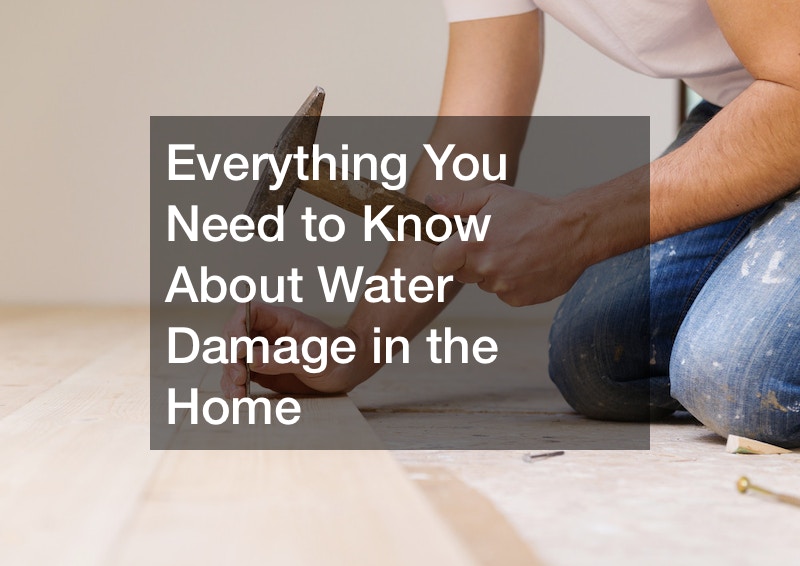
If you have ever been concerned about what might happen if you get water damage in your property, you aren’t alone. If this has already happened to you, you should reach out to a water damage restoration company. They can help you get the mitigation restoration that you need to potentially spare your property from the worst damage that could possibly happen while you are going through all of this.
The more that you think about it, you should know that you need to know some things such as how to use a dehumidifier for water damage to help alleviate some of the worst damage that could occur from the water damage done to your home. Therefore, you might want to look at getting some water damage consulting to see where you stand with things right now and what you can potentially do to get it fixed.
Using a dehumidifier after leak can certainly help you get the kind of help that you need to make your home look delightful and assist you with getting your home cleared up after a leak has occurred. Given that, you might want to make sure you use your dehumidifier on a regular basis to keep things cleaned up naturally.
No homeowner ever wants to hear that their home has water damage as it can be difficult to get rid of. Mold and water damage can also be a health hazard! Therefore, if you wish to learn more about its causes and how to get rid of it, continue reading. Here’s a guide on beating the damage and winning your home back with a water damage insurance payout!
The Basics of Mold and Water Damage
One of the biggest keys about mold is learning how to control the moisture level. If you are experiencing a problem with mold in the home, you must also seek water damage insurance payout to fund the repairs. However, this is quite an involved process.
First, you must clean up the mold. However, if you don’t fix the water damage, more mold will grow. Therefore, dry the water-damaged areas of the house within one or two days.

Why Is There Mold and Water Damage in the Home?
Knowing why the water damage and mold formed in the first place is also significant, as this can help you stop more growth!
Understand that certain molds are a part of the natural environment outdoors. These substances play a huge role in breaking down organic matter — like fallen trees and leaves on the ground. They are normal, and even crucial to the outdoors! However, on the flipside, mold and water damage should be avoided indoors. Mold growth needs to be avoided inside of houses and apartments it spreads easily. Mold is transferred via spores in the air. These can travel from the outdoors. However, when you have water damage in the home, these spores can land on the damp areas and spread rapidly like wildfire!
Keep in mind that there are various types of mold, but without the presence of moisture, none of these substances will grow.
Outdoors, you can typically find it on trees!
Can Water Damage and Mold Cause Health Problems?
Mold will not cause a problem when you’re exposed to it outdoors. However, water damage combined with mold can cause issues when it’s indoors. This combination produces allergens, mycotoxins, and irritants. If you inhale these allergens, it can cause you to have an allergic reaction!
Depending on how sensitive the individual is, the more dramatic the reaction will be. Getting a water damage insurance payout can help compensate you.
These reactions can cause the person to feel the following symptoms.
- sneezing
- red eyes
- runny nose
- dermatitis
If you breathe in these spores, one of these reactions can be immediate or prolonged. Even simple allergic reactions are common. However, on the other side of the spectrum, mold can also cause extreme asthma attacks. The mold can also irritate a person’s throat, eyes, skin, and lungs. These can happen in people who are allergic and non-allergic to mold.
However, there is even more in depth research in the works. If you’re worried you have been exposed to mold, and what health repercussions this may cause, contact your healthcare provider!
How to Prevent & Get Rid of Water Damage and Mold?

Before looking into water damage insurance payout, you’ll need to clean up the mess that it has caused. Know that mold can gradually destroy your property. It can damage anything that it lands on. This can include walls and home furnishings.
It’s a tough substance to get rid of since mold spores can be found in the air and land on these different furnishes and grow again. However, these spores will not grow if there is no moisture present. Therefore, control the water damage indoors. If you simply clean up the mold, it will return with a vengeance. Leaks in the windows can cause this scenario as it lets plenty of moisture in the home. However, there are other ways you can prevent this awful scenario.
Find a Better Plumber
Better plumbing services can help you keep your bathroom nice and dry. Leaks in the bathroom are a recipe for disaster!
Check Your Sprinklers
Make sure your sprinkler systems aren’t pouring water into your home. If this results in mold, look into a water damage insurance payout.
Hire a Service
If you’re feeling overwhelmed about all these preventative measures, mold remediation services can help you sort everything out!
Seawall Failure
Seawall failing can also lead to water damage. Look for rust stains, cracked slabs, loss in soil levels, or leaning slabs.
Fix a Downspout
Additionally, avoid the infamous bent up downspout. This happens when you live in a stormy area. Hail is likely to damage downspouts. When this downspout is dented up, water can’t be properly redirected away from the home.
Fix the Roof
However, leaks on the roof can also cause damage to the entire home. Work with roofing contractors if you wish to avoid this issue completely.
Get the Gutters Fixed
Gutter repair can also save you from mold.
Get New Windows
Replacement windows are a must if your current windows are poorly insulated. After all, water can seep through holes and cracks and worsen your mold problem.
Keep AC Pans Clean
Keep your air conditioning drip pans clean. Make sure the drain lines are not obstructed and that they are flowing properly. If mold does develop, keep that water damage insurance payout in mind.
Keep Indoor Humidity Low
If possible, try to keep the indoor humidity below 60%. Use a humidity meter. These are small and relatively inexpensive. You can find one for around 20 dollars.
You can also reduce humidity by venting appliances in the home that produce moisture. This can include windows, pipes, and walls. Dry these wet surfaces immediately. Combustion appliances also produce a lot of water vapor, so watch out for these as well.
Use a dehumidifier in an area of the home that is prone to moisture. Take advantage of the exhaust fans in your home too! Turn these on after taking a shower. You can also open up a window when cooking.
Condensation is another problem you should try to prevent. Increase the air temperature or cover cold surfaces like cold pipes. You can also increase the ventilation by opening doors.
Who Should Clean Up the Mold for You?
Should you hire a professional or do this project yourself? This depends on a variety of factors! Consider the size of the mold problem. If the afflicted area is less than 10 feet, hire a team. You can do it yourself if it’s 3 feet. Therefore, follow these guidelines!
Do not attempt this project if there has been a lot of damage done, as you can risk putting your health at risk.
When hiring someone to clean up the mold, ensure they have experience in the field, so you can feel confident that they’ll completely eradicate the problem. They should follow all of the recommendations listed in the EPA’s manual, which is titled the Mold Remediation in Schools and Commercial Buildings. Additionally, ask them if they have references.
On another note, if your HVAC system is covered with mold, do not run the system. Hire a professional in this case too. The same goes for faulty plumbing services. Get plumbing repairs done with another seasoned professional.
Tips for the Bathroom

Places that are always damp are at the highest risk for mold. Bathrooms are also poorly ventilated, which can exacerbate the problem. Increase the ventilation. Try to run a fan or try to open a window. Frequently cleaning the space will also prevent the mold from recurring.
When cleaning off the mold, scrub the hard surfaces with water and a strong detergent. Allow this to dry completely. Ceiling tiles and carpet are porous materials, therefore, they should be thrown out if you spot mold. The mold is almost impossible to remove when it’s growing on these items.
When preventing mold and water damage in the bathroom, do not paint over the surface. Eradicate the problem first and foremost. Additionally, paint over mold is likely to peel. If you’re hesitant about throwing something out because it has a special meaning to you, talk with a specialist in furniture repair. They may be able to salvage the item. These specialists may also be able to restore carpets or rugs. However, when you’re bringing an item in, look for a specialist who is affiliated with a professional organization.
Prepare Yourself for the Clean up
When cleaning up the mold, take precautions and limit your exposure to the spores. You can take matters into your own hands and wear a mask when dealing with the mold. Wear a N-95 respirator. You can buy these at any hardware stores. They are relatively cheap, costing anywhere between 10 and 20 dollars. These masks are made out of plastic or rubber. They also have a nozzle in the front to provide purer air quality. The removable cartridges also aid in trapping those dangerous spores. Ensure your mask fits properly. Do a test run before encountering the mold and water damage.
Wearing gloves is another important step you should take. Contact with your skin is also dangerous. Your gloves should extend all the way to your forearm. Additionally, when you’re using harsh chemicals, it’s a smart move to use gloves so you don’t burn your skin.
Additionally, wear a long shirt and pants to completely cover your skin.
Don’t neglect your eyes either. Wear a thick pair of goggles before starting this project. You will avoid getting mold spores in your eyes.
Now that you know how to protect your body, you need to learn more about water damage insurance payout.
The Water Damage Insurance Payout

However, cleaning up the mold is only half the battle.
If the water damage and mold have caused significant damage to your home, consider getting a water damage insurance payout. You’ll need to follow these steps.
For starter’s call an emergency restoration company if you can’t clean the mold up yourself. Next, report the leak to the insurance company. They must know the details about the loss if you want to get paid. Then, the insurance company will come to your address to assess the damage done to your home. An adjuster will be assigned to your case. They will also represent the company. After asking the homeowner some questions, they will determine whether they want to cover your loss. It can take up to two weeks for your adjuster to stop by and check out the damage.
Next, you’ll have to agree to your water damage insurance payout. Ensure this covers the damage by meeting with various contractors. However, you need to consider more than price. Find a quality contractor to do the work. Have the work checked by your homeowner’s mortgage company. Get it paid in installments for the best rate. Also, read through your original insurance policy. These policies are vague for a reason! So read carefully!
Conclusion
In conclusion, water damage and mold can wreak havoc on your home and life. However, there are many ways you can avoid this issue. Look into getting water damage insurance payout to fund a roofing inspection, better windows, or to find a better plumber.
This way, you can feel safe within your home once more!



